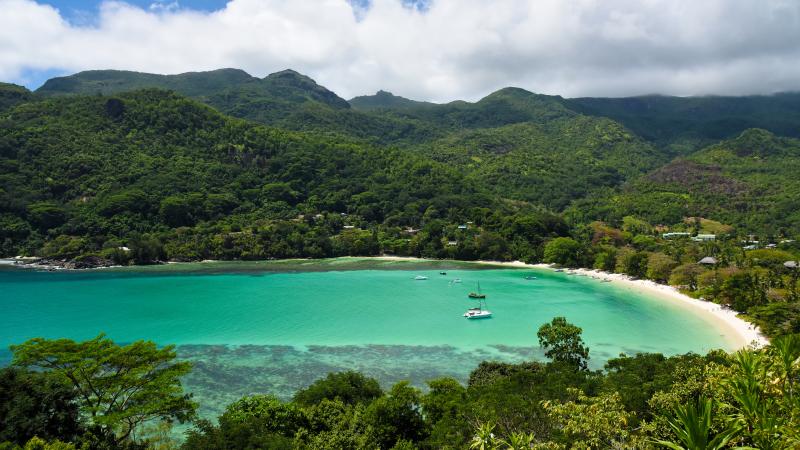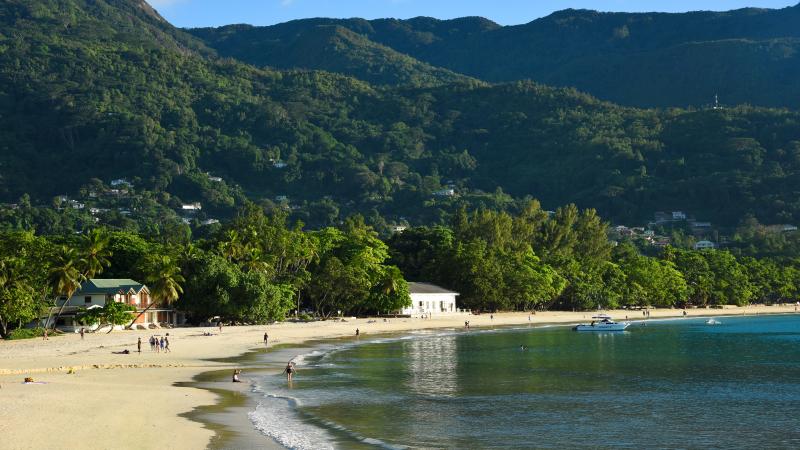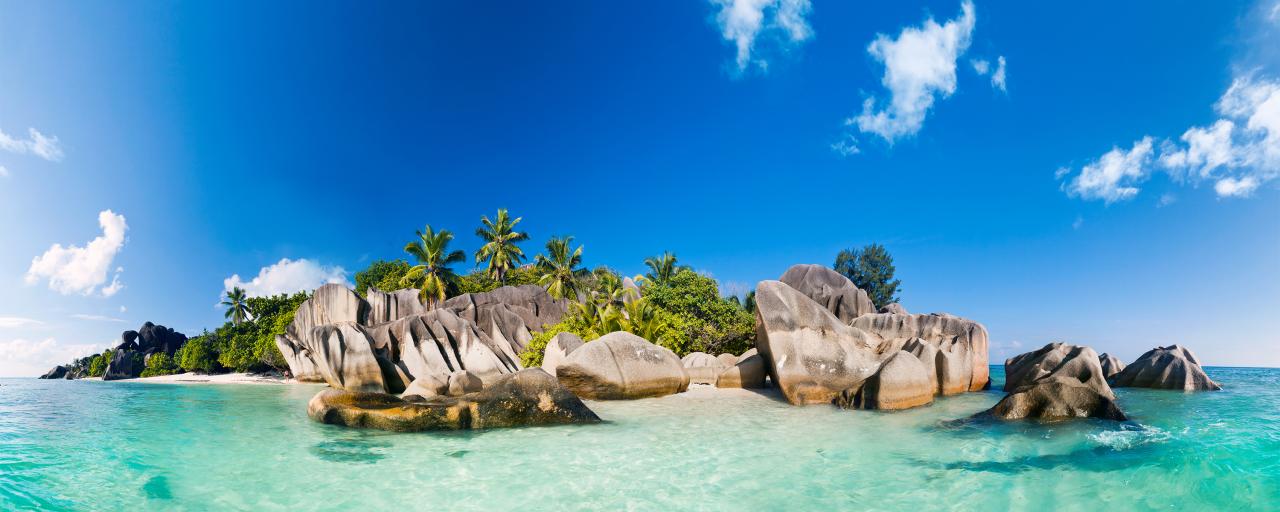General
Regardless of final destination, all visitors to the Seychelles will begin their journey on Mahé, the largest and most diverse island in the archipelago. The name of the island comes from former French Governor Mahé de La Bourdonnais, although the original name for the island was the "Ile d'Abondance", or the "Island of Abundance". Indeed, the island has natural beauty in abundance, with many being won over by the inviting images of sandy, palm-fringed beaches under clear blue sky.
Although barely visible on most world maps, Mahé offers 154 km² (59 sq. miles) of space, is 28 km (17 miles) long, 8 km (5 miles) wide, and is home to the smallest capital city in the world, Victoria.
Politically, the island is divided into 22 districts (there are 25 in total in the Seychelles). From the air, it's easy to spot the lush granite mountains that form the interior of the island, extending from north to south like a backbone through the landmass. Towards the east and west of the island, there are country foothills extending like arms into the sea, forming bays with clear turquoise water. From the ocean, the granite towers over you, extending steeply from the sea. Over millions of years, these rocks have turned into powder-soft sand that nestles in coves, giving the island its characteristic beauty.

Nine out of every ten Seychellois citizens live on Mahé - around 75,000 in total - of whom around a third live in the capital in the north. Even those who don't live in Victoria likely work there or go shopping there. Thanks to the inauguration of Mahé's international airport in 1972, along with its independence from Great Britain, Mahé is now a hub for tourists from all over the world, and is the economic and cultural heart of the Seychelles. Besides the airport, Mahé is also home to the Seychelles' governmental and administrative centre, along with a university, sports stadia, TV and radio stations, craft shops, a trading and fishing port, and larger Seychellois companies such as the Seybrew Brewery and the tuna fishery.
Along the north-east coast of the island, extensive land reclamation projects have created much more space for commercial ventures and a four-lane motorway. In fact, Eden Island, a completely artificial island, is an example of this, even if it does not characterise the typical idea most hold of the Seychelles.

Those who wish to explore the island to find their own quiet spot should make sure that they are in reasonably good shape and bring along sturdy footwear on their holiday. Thanks to the well-developed road network, those less willing to walk around can traverse the island using public buses, taxis, or rental cars.
Mahé is beautiful, allowing you to witness natural growth up close. Drive on winding roads along the coast or through the mountains, discovering photograph after photograph - colourful, wooden Creole houses, small shops, isolated bays, and luxurious vegetation at the heart of it all.
The centre of the island serves up imposing peaks and clouded forests with diverse flora and fauna, creating a stunning backdrop for the island's numerous hiking trails. Countless freshwater springs characterise the rich nature of the island, while tropical palms and other plants also grow throughout this region, including mango, papaya, banana, tea, and more.
In terms of beaches, the island's best-known offering is Beau Vallon, which can be found in the north-west. This is also the touristic centre of the island, one that is almost as bustling as the capital itself. Numerous accommodation options, restaurants, shops, and diving centres can be found in this sprawling bay. Anyone looking for peace and quiet should probably look in the south of the island instead, as the atmosphere here is much more relaxed and contemplative.

Approximately 5 km (3 miles) off the north-eastern coast of Mahé is the Sainte Anne Marine National Park. Founded in 1973, this park consists of six small islands and a surrounding lagoon. The islands found in the park are Cerf Island, Ile Cachée, Moyenne Island, Round Island, Long Island, and the largest of the group, Sainte Anne Island. The waters here contain a multitude of fish and other sea creatures, and this is an important refuge for them. The gathering of fish and shellfish is strictly prohibited, as are motorised watersports; green tourism is more on the agenda here. As you might imagine, this area offers excellent snorkelling conditions, with a great variety of flora and fauna to be seen, especially in the Sainte Anne Channel, which runs between Sainte Anne Island and Moyenne Island, and, for this reason, this is the destination of many tours.



 Certified Seychelles Experts
Certified Seychelles Experts
